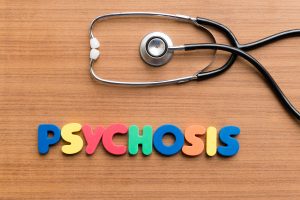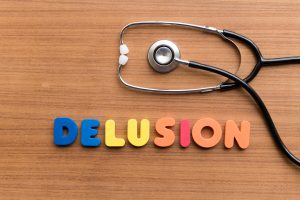 Psychosis is a condition characterised by the presence of delusions and/or hallucinations. ‘Psychotic type’ symptoms may be observed following a significant brain injury. However, the presentation of psychotic type symptoms following brain injury is not always indicative of a psychotic disorder. These symptoms may actually reflect the neurological sequelae of brain injury.
Psychosis is a condition characterised by the presence of delusions and/or hallucinations. ‘Psychotic type’ symptoms may be observed following a significant brain injury. However, the presentation of psychotic type symptoms following brain injury is not always indicative of a psychotic disorder. These symptoms may actually reflect the neurological sequelae of brain injury.
It is important to be aware that if the person has experienced a previous psychotic illness, this is likely to re-emerge following brain injury. Occasionally, a pre-existing psychotic disorder may have gone unrecognised prior to the brain injury.
Delusions can be defined as fixed unshakeable beliefs which are firmly held and cannot be rationalised away even in the face of evidence to the contrary. They are frequently based on an incorrect interpretation of reality. The delusional beliefs are not beliefs ordinarily accepted by others in the person’s social, cultural and religious background.
Delusional beliefs are frequently seen following brain injury. The commonest types seen following brain injury are paranoid and persecutory delusional beliefs.  Paranoia is commonly seen during the period of post traumatic amnesia e.g. the person may believe that others intend to harm them or are trying to imprison them (rather than keep them safe and well). Paranoia is also frequently observed in those who remain confused and disorientated.
Paranoia is commonly seen during the period of post traumatic amnesia e.g. the person may believe that others intend to harm them or are trying to imprison them (rather than keep them safe and well). Paranoia is also frequently observed in those who remain confused and disorientated.
Hallucinations occur when there is incorrect interpretation of the person’s experiences of the world around them i.e. sensory input to the brain is incorrectly processed. A range of hallucinations can be seen following a significant brain injury including visual, auditory and sensory hallucinations.
Following brain injury the presence of delusions and hallucinations (e.g. paranoia and visual hallucinations) may be due to withdrawal from alcohol or illicit drugs in some patients.
In the context of seizure activity, delusions and/or hallucinations may be experienced. In the post-ictal phase (i.e. the period immediately following a seizure), increased levels of confusion are frequently observed. Sometimes this results in the person misinterpreting the events occurring around them and expressing delusional ideas. Some types of seizures (e.g. temporal lobe seizures) are associated with visual, auditory and sensory hallucinatory experiences.
Following brain injury, the differential diagnosis of true psychotic symptoms from other neurological sequelae may be difficult. A significant brain injury can alter a person’s appraisal of the world around them due to cognitive, communicative, visual/perceptual, sensory and hearing impairments etc. Expressive language impairments may result in bizarre speech content which may be perceived as the person expressing delusional beliefs.
The person who is confused or has executive functioning difficulties (i.e. impaired reasoning, judgement and problem solving abilities) may misinterpret their circumstances and what is happening in their environment. This may result in them presenting with cognitively induced delusional beliefs which resemble psychosis e.g. individuals with significant memory impairment may accuse others of stealing their belongings when in fact they can’t remember where they have put the missing items.
In the context of significant cognitive impairment other factors may further contribute to the person’s reduced ability to accurately interpret their circumstances and the events occurring in their environment resulting in increased likelihood of them expressing delusional/paranoid beliefs. These factors include stress, anxiety, depression, fatigue and feelings of overwhelm.
It is important to seek psychiatric assessment and advice regarding differential diagnosis and management of psychotic type symptoms. It is also important to ensure that a full assessment of cognitive, communicative, perceptual and sensory abilities is carried out prior to making a definitive diagnosis of a psychotic disorder.